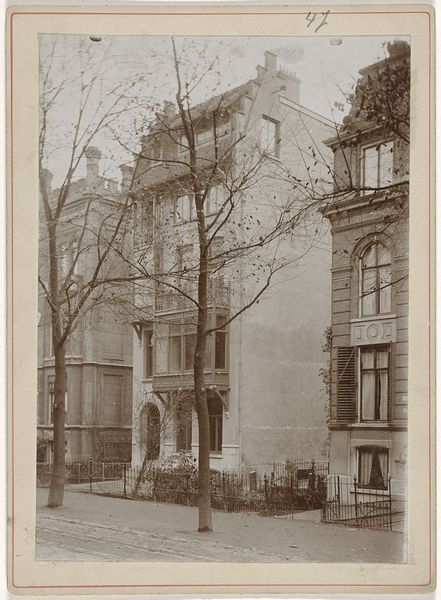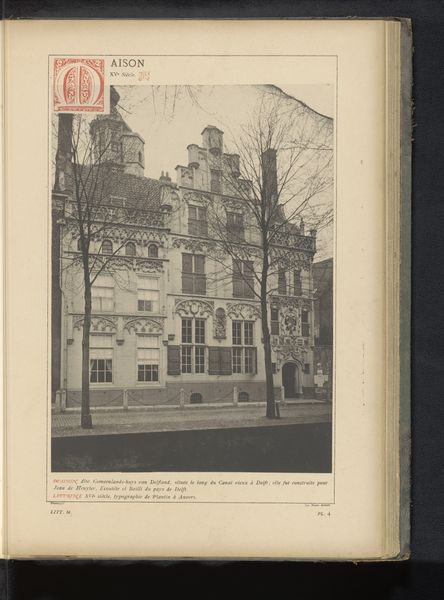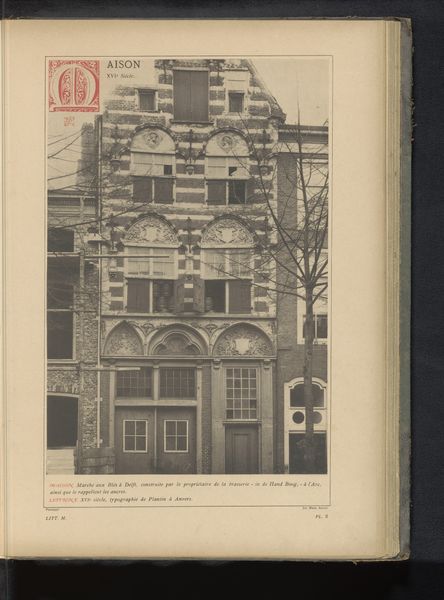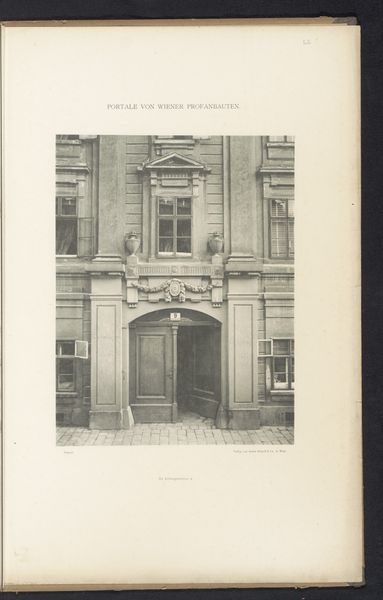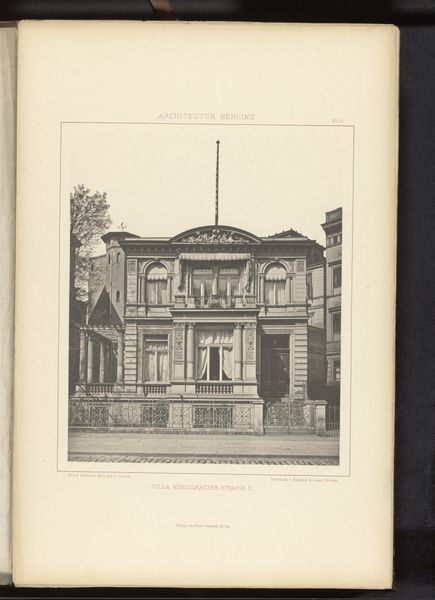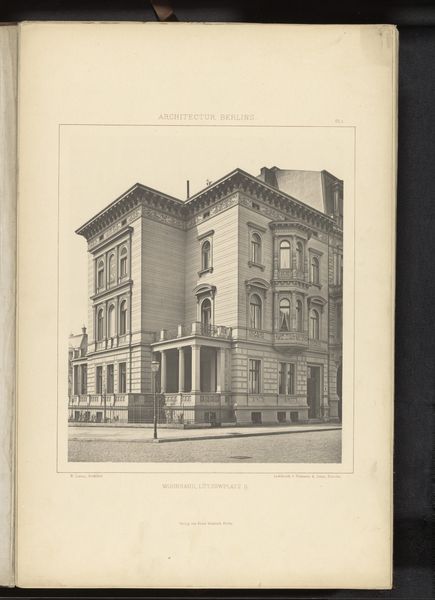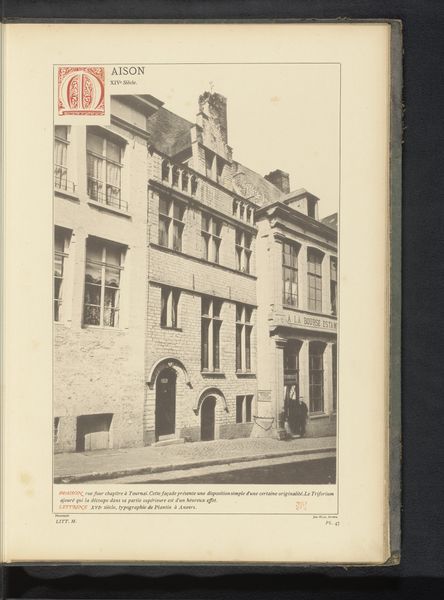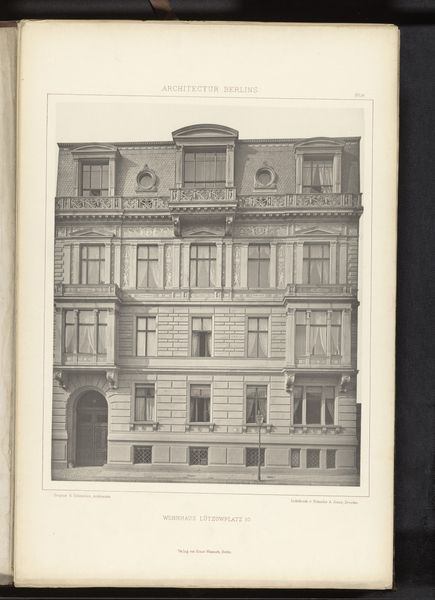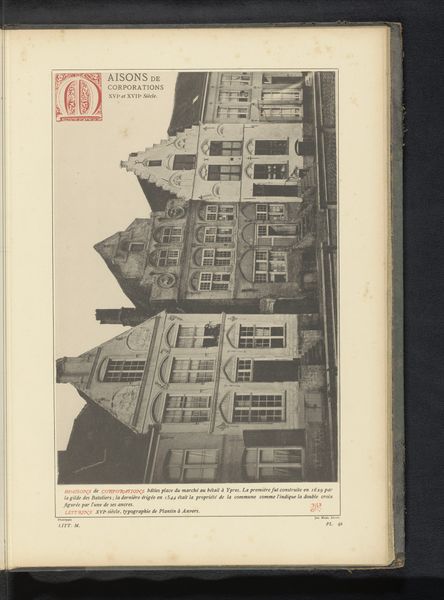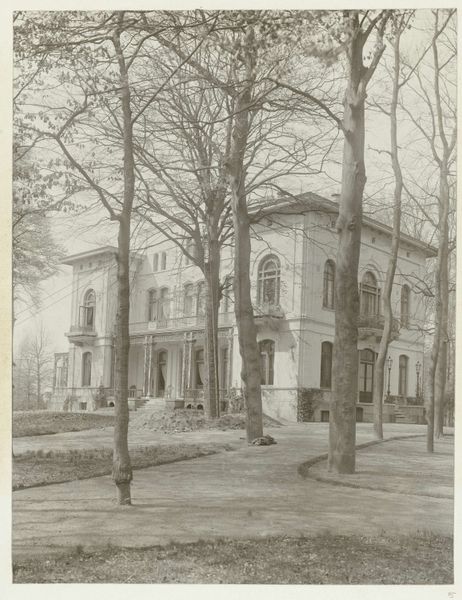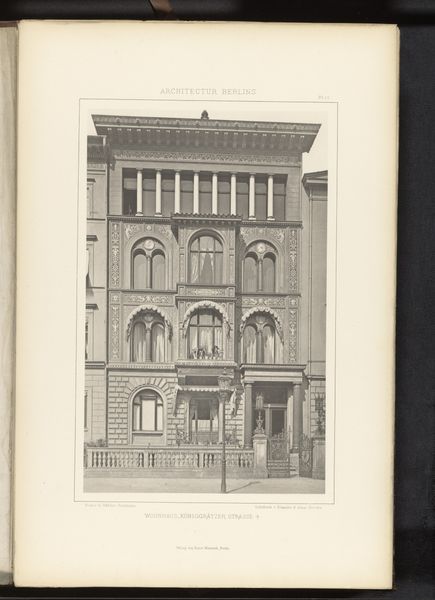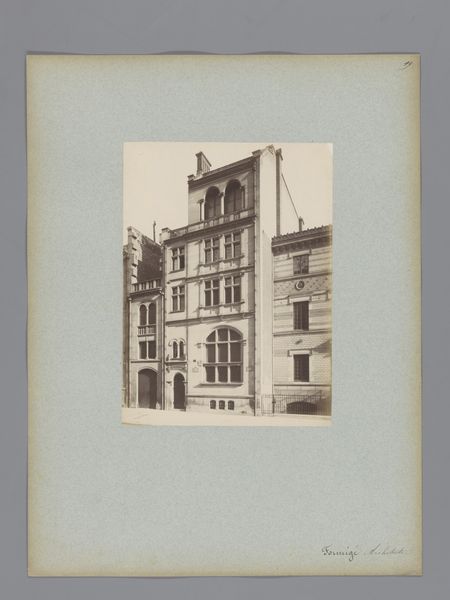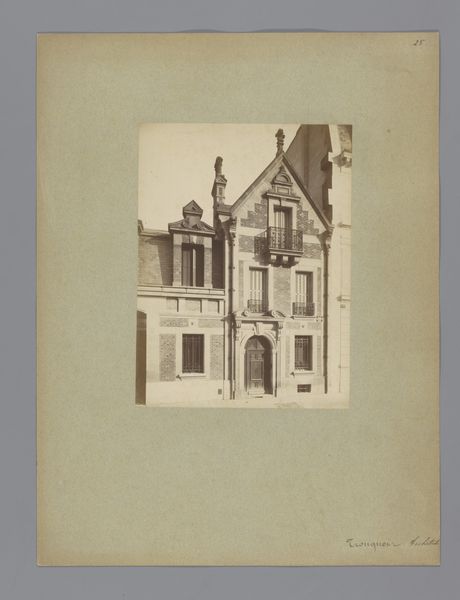
Gezicht op een woonhuis aan de Karlsbad 26 in Berlijn, Duitsland before 1877
0:00
0:00
anonymous
Rijksmuseum
Dimensions: height 325 mm, width 227 mm
Copyright: Rijks Museum: Open Domain
Curator: So, what are your initial impressions of this photograph, entitled "Gezicht op een woonhuis aan de Karlsbad 26 in Berlijn, Duitsland," taken before 1877? Editor: The photo showcases this very formal-looking house with ornate details. I immediately notice the rather imposing and rigid architectural style, but I also find myself wondering what life was like inside, or who might have lived there. What aspects of this piece stand out to you? Curator: Well, I'm struck by how this image encapsulates the aspirations of a rising bourgeoisie in Berlin during that time. This Neoclassical architectural style wasn’t just about aesthetics. It visually asserted a claim to power and prestige. Do you notice how the photograph itself, presented in a bound volume of architectural studies, further solidifies this statement? Editor: That makes sense. It's like the picture and the album are actively trying to broadcast a particular kind of message or idea. I guess I didn’t think about the presentation that way. Curator: Exactly. The museum and, by extension, photographic archives, played a key role in shaping how society perceived these structures and, by extension, the people who commissioned and occupied them. Now, consider the date: pre-1877. This puts it squarely within a period of significant industrial and economic expansion in Berlin, a period marked by both immense opportunity and growing social stratification. Does this change how you view the work? Editor: Yes, knowing the historical context like that helps clarify a little, that it’s more than a building; it's also representative of these broader power dynamics at play during Berlin’s growth period. It's still just a bit imposing, but I now see what this kind of visual representation tries to convey. Curator: It reflects the power and status intended, through deliberate imagery circulating and reinforcing it to the wider world. Editor: It has me thinking about the political symbolism inherent in architecture and representation. Curator: Precisely. And that's a perspective we can always keep in mind as we engage with art.
Comments
No comments
Be the first to comment and join the conversation on the ultimate creative platform.
